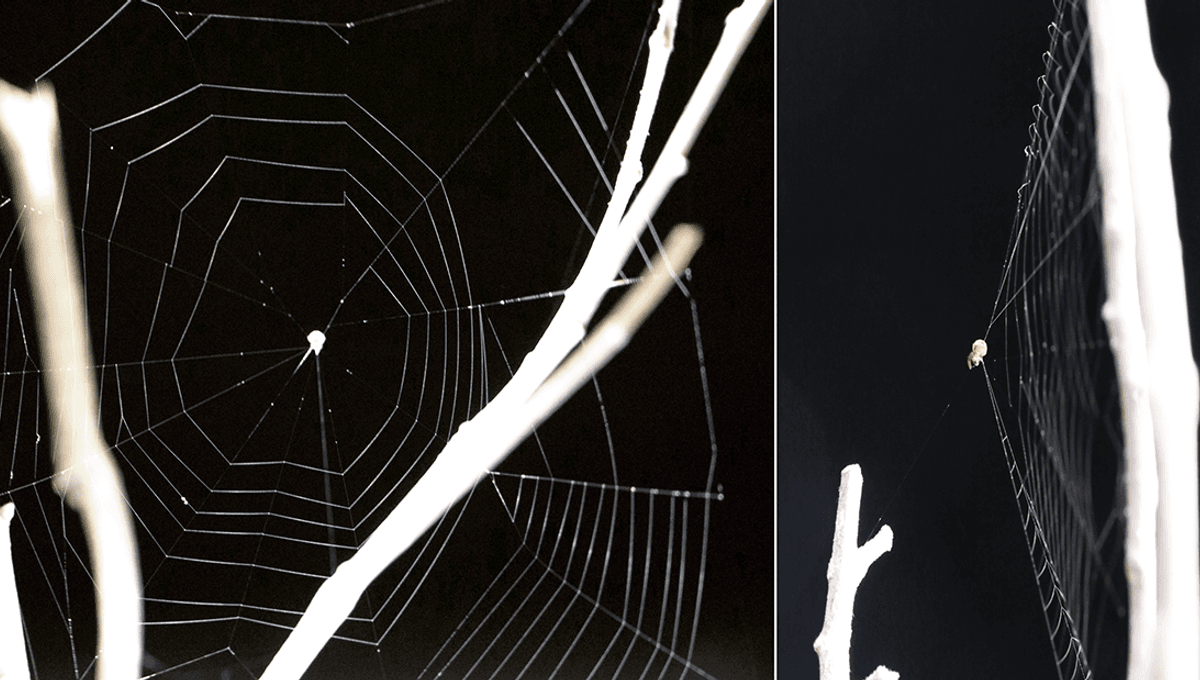
Hate the whine of buzzing mosquitos? Well, the slingshot spider (Theridiosoma gemmosum) has found a way to make it useful by listening out for the sound to cue its attack.
These spiders pull the center of their webs back so that it’s primed to fire like a slingshot when a mosquito is in range, and it seems they know when to do so by listening out for the sound. Scientists’ suspicions that they were using sound in this way were confirmed when they were able to trigger an attack in lab-living spiders using a tuning fork.
Their experiments revealed slingshot spiders can unleash their assault within 38 milliseconds, making it a highly effective way of trapping insects. If only we could put some slingshot spiders to work on our porch, but it turns out tracking down them down is a task in of itself.
“Slingshot spiders are really tiny, so they can be quite hard to find,” said study co-author Sarah Han of the University of Akron in a statement, “It does take some time to develop the eye for them.”
Han spent a lot of time peering into crevices along riverbanks in Ohio in search of the study’s test subjects. Slingshot spiders have distinctive cone-shaped webs, and the spider itself will usually be perched at the tip.
The inspiration to dive into what the slingshot spider was using as a cue came from the team’s discovery that they could trigger these spiders to strike by clicking their fingers. You might not have given much thought to spiders being able to hear, given their lack of ears, but they have other ways of listening. Just look at the ogre-faced spiders, a bunch of googly-eyed killers that use their hairy legs to pick up on sound.
The slingshot spiders used in the study were rehomed in a lab with some twigs to build their webs on, and then it was time to bring in the mosquitos. The mosquitos were tethered so that they could be introduced into the slingshot spiders’ arenas, with their wings free to flap and make that characteristic mosquito whine.
Close-up footage showed that the spiders were deploying their slingshots before the mosquitos made contact with their webs, indicating they may be able to pick up on the sound of the approaching insect thanks to sound-sensitive hairs on their legs. It all happened very quickly, with the webs accelerating at up to 50g (504 m/s2) and reaching speeds of nearly 1 meter per second (3.3 feet per second), meaning they could intercept the mosquito within 38 milliseconds.
There was also a difference in how frequently the spiders reacted based on whether the mosquito approached from in front (76 percent strike rate) or behind (29 percent strike rate). It could be that the web itself helps the spiders to work out where the sound is coming from, so they know not to bother when their weapon is facing the wrong way.
If any slingshot spiders would like to accompany me on my next trip to Indonesia, my DMs are open.
The study is published in the Journal Of Experimental Biology.
Source Link: Slingshot Spiders Hurl Webs At Nearly 1 Meter Per Second To Catch Buzzing Prey